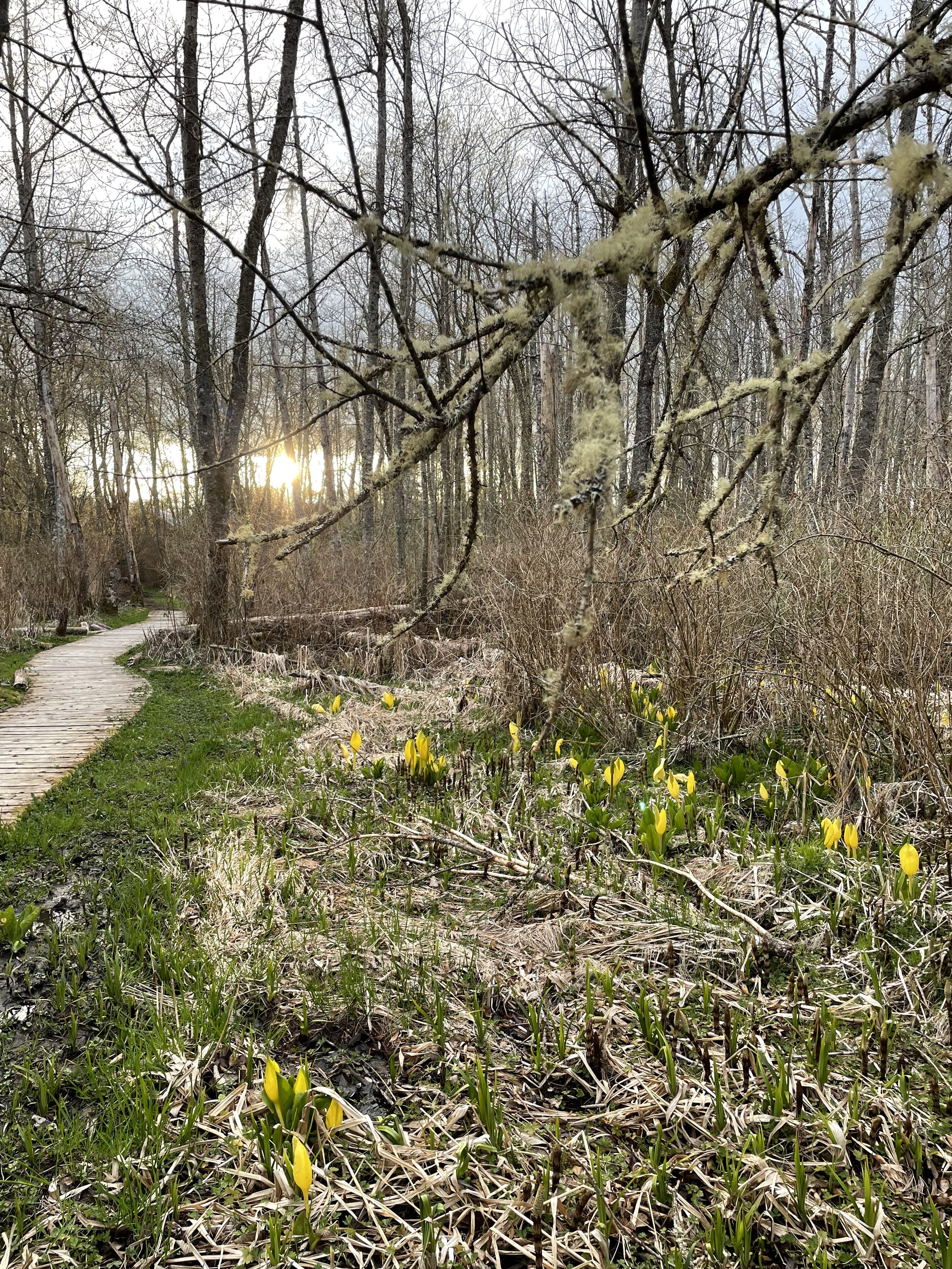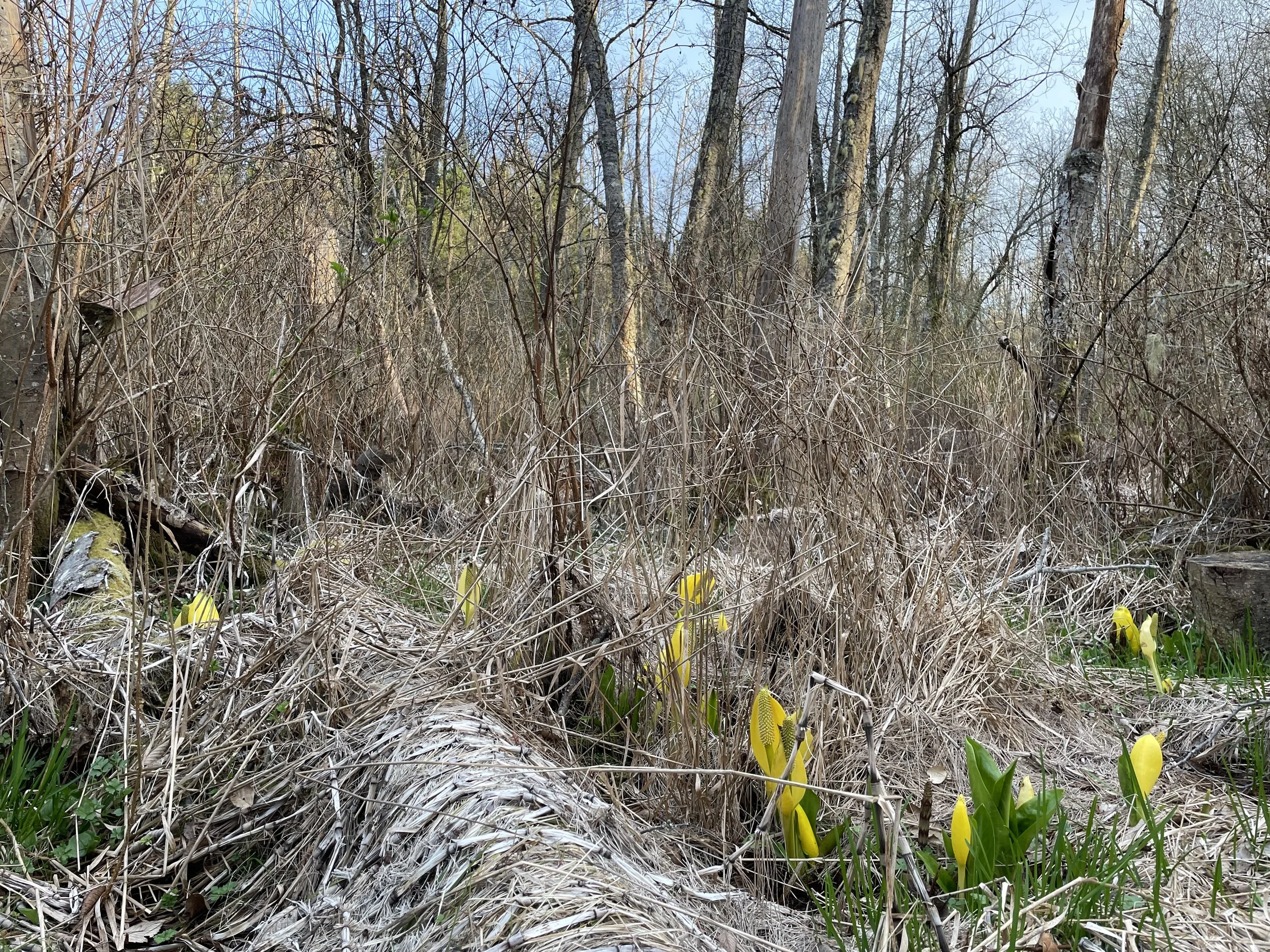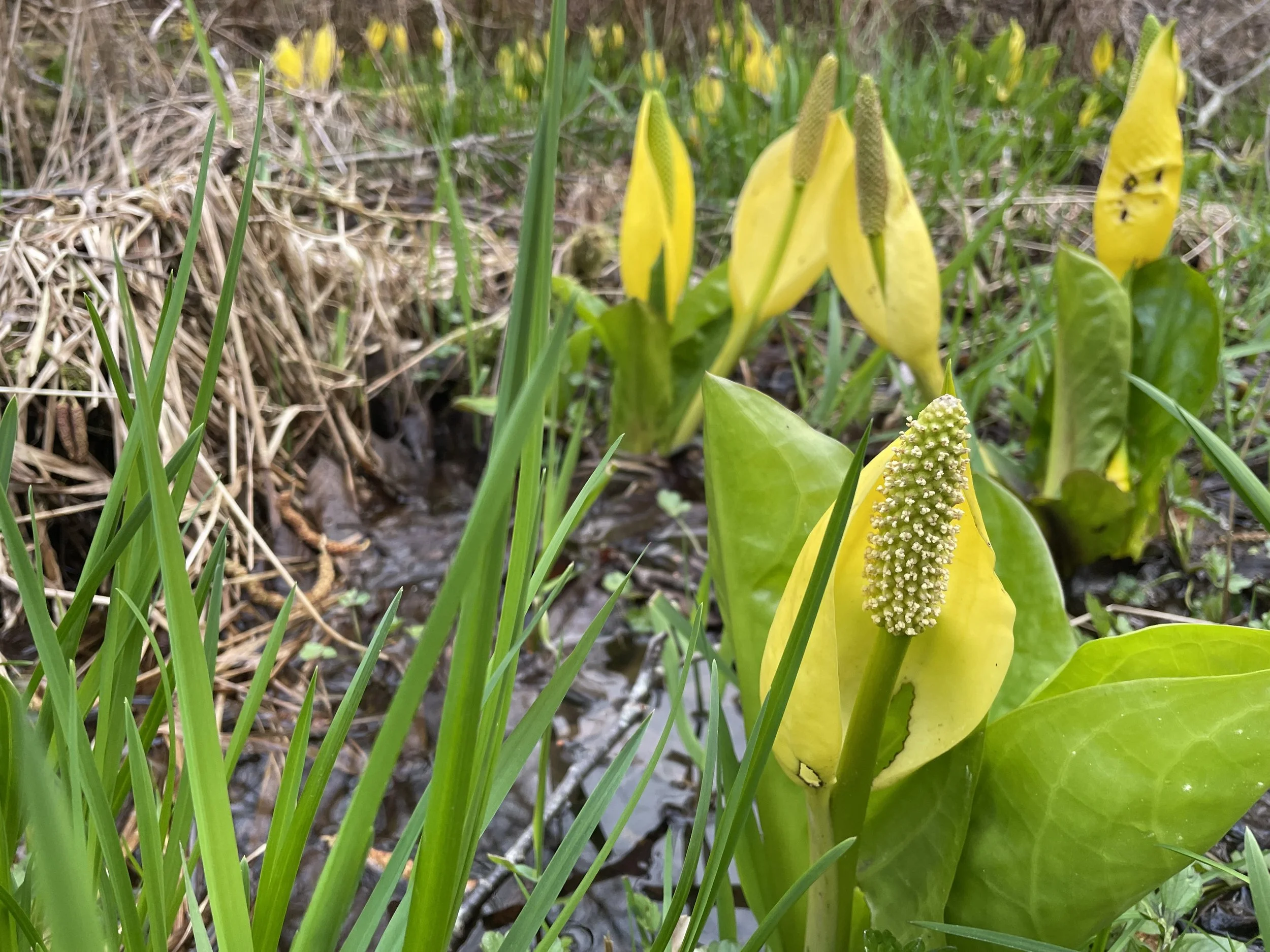Lessons from Skunk Cabbage
On a walk with a friend on Sunday, while circling Blakely Harbor, traversing the top of Fort Ward’s high cliff, dropping to its shoreline and climbing up again, we chatted about the things forty year old women chat about on long walks: the joys and difficulties of partnership, youthful injuries that have become chronic ailments, what we’ve (finally) accepted about ourselves, our aging bodies, areas in which we’re (still) hopeful for change, our tight pelvic floors. All the while I kept my eyes open and a part of my attention trained for Skunk Cabbage.
Skunk Cabbage blooming on the margins of a boardwalk through a bog on friends’ Whidbey Island farm.
Tis the season, after all. Skunk Cabbage is the second native flower to grace our coastal Pacific Northwest forests once Indian plum’s white blooms are replaced by lime green foliage. I’ve felt an expectation verging on impatience for this year’s yellow flares.
Alternately called Bog Lantern, Skunk Cabbage’s large, canary yellow flowers push up through the mud and decay of last year’s green things. I later learned they do this not because the air is warming (though it is), but because Skunk Cabbage is capable of thermogenesis.
Skunk Cabbage, which are related to taro and were a traditional food source, create their own heat by breaking down the starches in their rhizomes. This heat generation creates a warm pocket of air around Skunk Cabbage that keeps its immediate environment as much as thirty-six degrees (Fahrenheit) warmer than the environmental conditions in which it grows. That temperature differentiation allows the plant to bloom in winter, to attract the first active pollinators, and to even melt surrounding snow.
I didn’t know this on Sunday. I only knew that the bright yellow of this flower was a harbinger of spring. I only knew that my habit of looking for solace in nature has yet to fail me. I only knew that the concept of a bog lantern felt particularly attune with our collective needs right now. Patrick Watson’s Lighthouse lyrics kept coming to mind:
Leave a light on in the wild | ‘Cause I’m coming in a little blind | Dreaming of a lighthouse in the woods | Shining a little light to bring us back home
We finally spotted Skunk Cabbage, down along the paved trail that runs the seaside length of the former US Army Coastal Artillery Corps installation. It flared right at the trail’s edge in standing, murky water. A tangle of Salmonberry’s thorned canes, which will soon gift us the next of our wild blooms, surrounded it. I felt a wash of grateful relief.
I came home and, after an evening spent wading through the intricacies of the neurotransmitter serotonin as it relates to inherited predispositions for anxiety that seem to be catalyzed by environmental distress, I crawled into bed with some decidedly lighter reading. Cascadia Field Guide is a poetic, celebratory collection of Pacific Northwest flora and fauna, a guidebook for seekers of a more melodic fluency in natural phenomena.
“The deep, lush, paddle-shaped leaves of Skunk Cabbage are one of the first greens to green in Cascadia’s spring, pushing up even through snow with a metabolic heat of their own creation.”
—Cascadia Field Guide, edited by E Bradfield, CM Fuhrman, and D Sheffield
I flipped through to the entry and accompanying poem on Skunk Cabbage. I read and reread the passage, a bit gobsmacked. A plant capable of thermogenesis? I always assumed this superpower was unique to mammals. Here I was, plumbing nature for an antidote to existential anxiety, and the message I received, with Skunk Cabbage as a teacher, was that it might be time to dig deep and generate one for myself.
What does this moment call for? This is a question my therapist repeated probably hundreds if not thousands of times in the nearly ten years we worked together. Today, my answer to that question is thermogenesis: the ability to call on the resources within me to stave off the cold in a proverbial winter that is, by some measures, nearly four years out from spring.
On my walk this morning, I went in search of Skunk Cabbage again. In every place where the land dips and water sits, I crouched down and scanned for its telltale flares. I didn’t see any, nor do I remember finding it here in the past, but I wanted to pay my newly enlightened respects.
I had already turned uphill toward home when I thought of one more place to look. I doubled back, dropped down a steep trail that ends at the water’s edge, and there it was on a flat and watery ledge, a light on in the wild.


